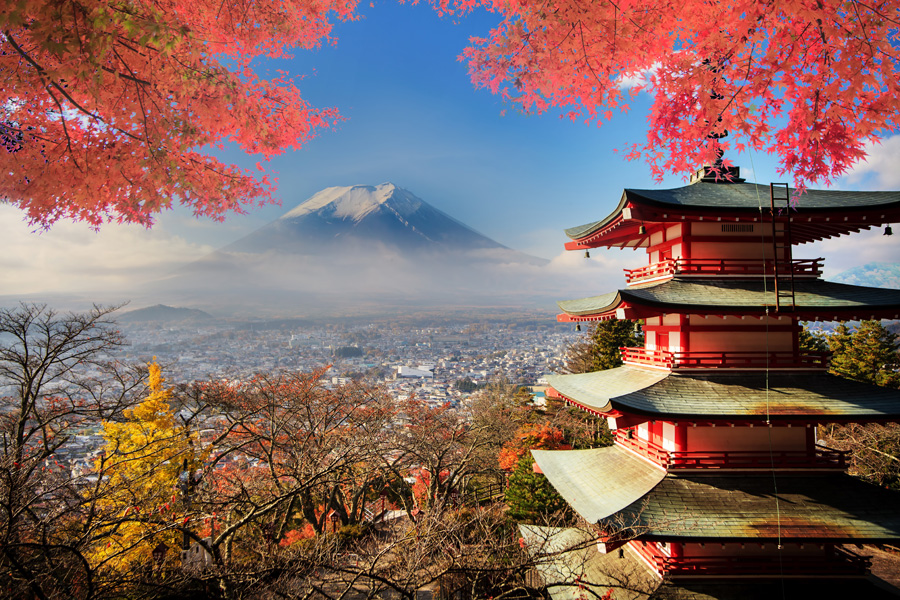[fshow photosetid=72157667022070585]
For anyone who has watched Lost in Translation, the mention of Tokyo will evoke images of a hectic, happening and at times confusing city that never sleeps.
Tokyo is bright lights, skyscrapers, crowded metro stations, a long and proud history, strange food and even stranger sub cultures. Here is our guide to making sense of it all.
Shibuya
Start the day with a cultural fix and head to Shibuya to take in the mighty Meiji Jingu shrine. Dedicated to the late Emperor Meiji and Empress Shoken who opened Japan up to the West after centuries of isolation, Meiji Jingu is a vast shrine complex set in a 200-acre park a little north of Shibuya. It is kept in natural colours and its position in the middle of a park with mature trees gives it a somewhat austere atmosphere. The shrine has all the hallmarks of a classic Shinto shrine, including a cleansing station where you can wash your hands and mouth before giving prayer, wishing tablets and traditional sake barrel offerings. It is not uncommon to see wedding processions wearing traditional dress come through the shrine.
After Meiji Jingu, head to Shibuya Crossing to experience modern Tokyo. The crossing is rumoured to be the busiest intersection in the world, giving it the nickname “The Scramble”. Whereas other intersections only give way in two directions at a time, lights at The Scramble all turn red at the same time, allowing sometimes over a thousand people to surge into the section all at once. To the uninitiated, it may seem chaotic but it’s a form of organised chaos that the Japanese have perfected. To get an overhead view, and record that iconic time lapse, head to the second floor of the Starbucks on the opposite side of the section than Shibuya Station.
Harajuku
The area around Shibuya offers plenty of shopping and people watching but for something a little different head to Harajuku, a young, vibrant area just a little north of Shibuya. For decades, this has been the centre of Japan’s most extreme sub cultures, which exist right alongside big international retailers such as H&M and American Eagle. Here you will find teenage girls in obscure outfits, boys with makeup and everything in between. Harajuku is also the birthplace of ‘kawaii’, or Japanese cute, and the place to go if you can’t live without a Lolita-style outfit complete with lollipop, pastel-coloured make up and laced bonnet.
There is more to Harajuku than scary-looking girls and toy shops; directly across from the famous Takeshita Street you will find a lovely pedestrian area with plenty of interesting shops, cafes and restaurants. Sneaker and vintage shops are particularly well represented but there are a few interesting art shops as well as shops selling everything from jewellery and watches to sunglasses and handbags.
Food Paradise
Japanese food is loved the world over and first time visitors to Japan will commonly marvel at the care and attention to detail that go into even the simplest meal. This is also the country of specialties and although many restaurants offer a variety of things, the specialty restaurant in Japan is a league of its own. It is not uncommon to visit a restaurant that does 20 different versions of the same dish or one that has been doing the same single dish for three to four generations, perfecting every aspect of it and oftentimes doing it so well that people will happily wait in line for close to an hour to try it.
However, if you are new to Japanese cuisine, a good place to get an introduction to local food is on the flood floors of major shopping malls like Tokyu, Isetan, Takashimaya or Mitsukoshi. Each have entire floors dedicated to food and drink and apart from some of the best stocked supermarkets you will likely ever see, there is also a huge amount of space dedicated to independent shops selling everything from sushi and salads to fried goods, bento boxes, grilled meat sticks, pastries and desserts. It’s a foodie’s paradise and very reasonably prized. Some department stores will even cut the price a couple of hours before closing in order to get rid of stock so if you are travelling on a budget, this is the time to splash out.
Going Green
If you’re lucky enough to visit Tokyo during late March or early April, do as the Japanese do and have a little picnic under the cherry blossom, or sakura as it it known in Japanese. During this time, the city’s many parks fill up with locals who enjoy food and drink on blankets under the trees. One of the best places to experience the famous cherry blossom is in Ueno Park in the north of the city, which is also home to the mighty Tokyo National Museum with its huge collection of Japanese art, the National Museum of Western Art and the National Museum of Nature and Science, to name but a few. Parts of the park get so crowded during sakura that it’s impossible to get a place to sit but other parks like Hibiya or Yoyogi are also worth a visit.
Tips:
- Each season in Japan has its charm. Summer is almost guaranteed warm, autumn offers an explosion of colour when the leaves turn bright red and yellow, winter has a certain romantic feel to it and spring offers the famous sakura.
- Tipping is very rare in Japan, even considered rude. Listed prices sometimes don’t include the eight percent tax so check if you are unsure.
- Like with any new country, learning a few phrases of the language is a good start and will get you a long way. While Tokyo is very international, not everyone speaks English so practice the basics.

